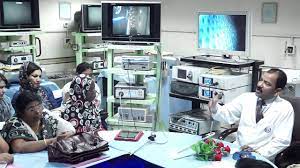Errors in Laparoscopic Surgery: A Surgeon's Guide to Minimizing Risk and Maximizing Patient Safety
Add to
Share
962 views
Report
1 year ago
Description
Laparoscopic surgery is a minimally invasive surgical technique that has become increasingly popular over the years due to its many advantages over traditional open surgery. However, like any surgical procedure, laparoscopic surgery is not without its risks, and errors can occur during the procedure. These errors can range from minor technical mistakes to major complications that can have serious consequences for the patient's health. This guide is aimed at surgeons and provides practical advice on how to identify and prevent errors during laparoscopic surgery. It covers topics such as the most common errors in laparoscopic surgery, how to recognize and correct them, and how to minimize the risk of errors occurring in the first place. The guide also emphasizes the importance of effective communication and teamwork in preventing errors and ensuring patient safety. Laparoscopic surgery has revolutionized the field of surgery with its numerous benefits such as reduced trauma, faster recovery times, and smaller incisions. However, it is not without its risks. Errors can occur during laparoscopic surgery due to a variety of factors, such as technical errors, equipment malfunction, and human factors. These errors can result in serious complications, including injury to surrounding organs, excessive bleeding, and longer hospital stays. This guide is designed to help surgeons identify and prevent errors in laparoscopic surgery. It covers various topics such as patient selection, pre-operative planning, and communication between team members. It also provides information on how to properly use laparoscopic equipment and avoid technical errors, such as trocar injuries and thermal injuries. The guide emphasizes the importance of ongoing training and education for surgeons and their teams to ensure that they are up-to-date with the latest techniques and equipment. By implementing the strategies outlined in this guide, surgeons can minimize the risk of errors during laparoscopic surgery and improve patient safety. They can also improve their own surgical outcomes and avoid costly and time-consuming complications. Laparoscopic surgery has revolutionized the field of surgery and is now widely used for many procedures due to its minimally invasive approach. However, as with any surgery, there are risks associated with laparoscopic surgery, including the potential for errors. These errors can occur at various stages of the surgical process, including pre-operative planning, patient positioning, instrument and equipment handling, and during the actual procedure. This guide aims to identify common errors in laparoscopic surgery and provide strategies for preventing and managing them, in order to improve patient safety and outcomes. Surgeons will learn how to recognize and avoid errors related to patient selection, inadequate training, insufficient experience, equipment failure, and communication breakdowns. With this knowledge, surgeons can take steps to minimize the risk of errors and ensure that their patients receive the best possible care.
Similar Videos






